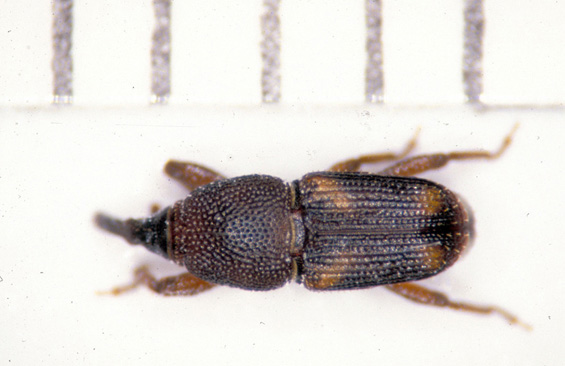
Common Name: Rice weevil
Scientific Name: Curculionidae: Sitophilus oryzae
Status: A pest of stored cereal products
Damaging Stage: Adult and larval
Biology: The rice weevil is small (1/10-inch), but has a long, curved snout almost one third of the total length of the insect. The body is red-brown to black in color with four light-yellow or red spots on the corners of the wing covers. Rice weevil larvae are white or cream-colored with a small tan-colored head capsule. They are legless, humpbacked and rarely seen because they stay inside the hollowed grain kernel.
Adults chew into the grain kernels from the outside and lay their eggs inside the grain. Larvae develop through several instars and also pupate inside the grain kernels. They may complete a generation in a month in warm conditions. Adults often live for seven to eight months. There are usually four generations per year.
Injury: Rice weevils are generally pests of wheat, oats, rye, barley, rice and corn. Adult females drill a hole into the grain kernel and lay their eggs in the cavity. The hole is plugged with a sap-like secretion. Once the eggs hatch, the larvae bore towards the center of the kernel where they feed and pupate.
Action Threshold: A rice weevil infestation can be detected through the strategic placement of sticky traps around a storage facility. All infested materials should be destroyed.
Management: The best way to control an infestation is to locate the source and eliminate it. Insecticides should not be used since food made for human consumption is involved.
|